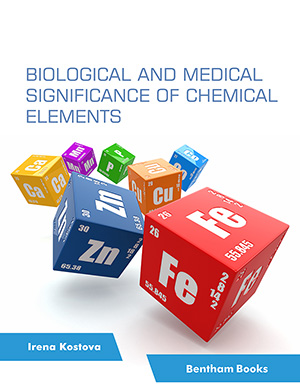Abstract
Introduction: This study synthesizes and characterizes a novel hybrid composite, SGdpm, to capture UO2 2+ ions from water. The composite has successfully formed by hosting covalently diphenylmethane-1,3-dione (dpm) within an inorganic silica gel matrix, showing promising potential for environmental remediation and nuclear waste management.
Methods: The preparation involved the reaction of tetraethylorthosilicate (TEOS) with diphenylmethane- 1,3-dione (dpm) under acidic conditions, resulting in white solids. The doped composite was characterized by Fourier Transform Infrared Spectroscopy (FTIR), revealing the presence of siloxane and Si-O-C bonds. The application of SG-dpm for capturing UO2 2+ ions from water was investigated, showing a shift in FTIR peaks and confirming the formation of SG-dpm-UO2 2+ as inner-sphere complexes. Scanning Electron Microscopy (SEM) revealed a non-uniform distribution of particles, essential for consistent behavior in applications such as adsorption.
Results and Discussion: Batch sorption experiments demonstrated temperature-dependent sorption behavior with increased efficiency at higher temperatures (T = 55°C). The study also explored the influence of pH and initial concentration on UO2 2+ sorption, revealing optimal conditions at pH 5 and lower initial concentrations (1.0 mg L-1). Kinetic studies using pseudo-second-order models indicated a high efficiency of UO2 2+ ion removal (99%) as a chemisorption process. Intraparticle diffusion models highlighted three distinct sorption stages. Sorption isotherm studies favored the Langmuir model, emphasizing monolayer adsorption. The thermodynamic analysis suggested an endothermic (ΔH = + 16.120 kJ mol-1) and spontaneous (ΔG = −25.113 to − 29.2449 kJ mol-1) sorption process. Selectivity studies demonstrated high efficiency in capturing Cu2+, Co2+, and Cr3+ ions, high degree selectivity of UO2 2+ ions (74%), moderate efficiency for Fe3+ and Zn2+, and lower efficiency for Pb2+, Ni2+, and Cd2+, and poor efficiency for Mn2+ ions.
Conclusion: SG-dpm exhibits promising potential for selective UO2 2+ ion removal, demonstrating favorable characteristics for various applications, including environmental remediation and nuclear waste management.
Keywords: 1, 3-diphenyl-1, 3-propanedione, silica sol-gel matrix, uranyl ion capture, pseudo-first-order, pseudo-second-order, sorption isotherm.
[http://dx.doi.org/10.3390/geosciences5010067]
[http://dx.doi.org/10.1002/adom.201500417]
[http://dx.doi.org/10.1007/s10971-013-3079-5]
[http://dx.doi.org/10.1016/j.jiec.2014.02.008]
[http://dx.doi.org/10.1016/j.arabjc.2012.04.048]
[http://dx.doi.org/10.1016/j.cis.2007.12.006] [PMID: 18321464]
[http://dx.doi.org/10.1021/cm050658h]
[http://dx.doi.org/10.1163/1568554053148735]
[http://dx.doi.org/10.1007/s10971-005-4063-5]
[http://dx.doi.org/10.1021/acsami.7b09419] [PMID: 28783297]
[http://dx.doi.org/10.1166/jnn.2010.1498] [PMID: 20352836]
[http://dx.doi.org/10.1007/s42452-020-2221-6]
[http://dx.doi.org/10.1039/C6RA12269H]
[http://dx.doi.org/10.1016/j.jtice.2015.11.004]
[http://dx.doi.org/10.1016/j.jenvman.2015.12.005] [PMID: 26720327]
[http://dx.doi.org/10.1016/j.aca.2005.08.070]
[http://dx.doi.org/10.1134/S000368380806001X]
[http://dx.doi.org/10.1007/BF02436895]
[http://dx.doi.org/10.1007/978-1-4613-0727-3_19]
[http://dx.doi.org/10.1088/2053-1591/ab6808]
[http://dx.doi.org/10.1117/12.188972]
[http://dx.doi.org/10.1039/b505422b]
[http://dx.doi.org/10.3390/molecules21070961] [PMID: 27455223]
[http://dx.doi.org/10.1016/1010-6030(91)85006-3]
[http://dx.doi.org/10.1007/s10967-021-07811-y]
[http://dx.doi.org/10.1007/s10967-023-09191-x]
[http://dx.doi.org/10.1016/j.saa.2010.05.030] [PMID: 20635469]
[http://dx.doi.org/10.1007/s11356-022-24689-9] [PMID: 36513899]
[http://dx.doi.org/10.1039/D0MA00087F]
[http://dx.doi.org/10.1016/0927-6513(95)00067-4]
[http://dx.doi.org/10.1016/j.rechem.2023.101103]
[http://dx.doi.org/10.1080/01490451.2010.507640]
[http://dx.doi.org/10.1016/0016-7037(78)90001-7]
[http://dx.doi.org/10.1002/app.13714]
[http://dx.doi.org/10.1016/S0032-9592(98)00112-5]
[http://dx.doi.org/10.1016/j.jhazmat.2006.05.023] [PMID: 16875778]
[http://dx.doi.org/10.1515/zpch-1889-0408]
[http://dx.doi.org/10.1061/JSEDAI.0000430]
[http://dx.doi.org/10.1021/ja02242a004]
[http://dx.doi.org/10.1007/978-3-642-35943-9_10066-1]





























